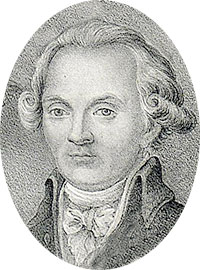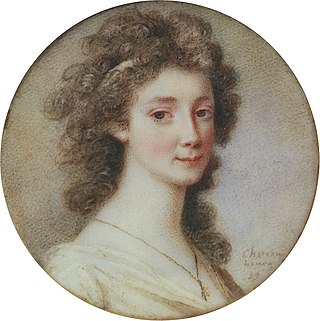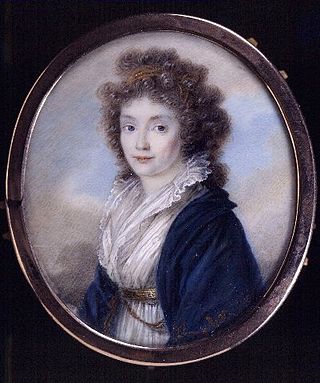| Years in Sweden: | 1773 1774 1775 1776 1777 1778 1779 |
| Centuries: | 17th century · 18th century · 19th century |
| Decades: | 1740s 1750s 1760s 1770s 1780s 1790s 1800s |
| Years: | 1773 1774 1775 1776 1777 1778 1779 |

Events from the year 1776 in Sweden
| Years in Sweden: | 1773 1774 1775 1776 1777 1778 1779 |
| Centuries: | 17th century · 18th century · 19th century |
| Decades: | 1740s 1750s 1760s 1770s 1780s 1790s 1800s |
| Years: | 1773 1774 1775 1776 1777 1778 1779 |

Events from the year 1776 in Sweden
| | This section needs expansion. You can help by adding to it. (June 2015) |

Charles XIII, or Carl XIII, was King of Sweden from 1809 and King of Norway from 1814 to his death. He was the second son of King Adolf Frederick of Sweden and Louisa Ulrika of Prussia, sister of Frederick the Great.

Frederica of Baden was Queen of Sweden from 1797 to 1809 as the consort of King Gustav IV Adolf.
Freemasonry in Sweden was introduced by the Swedish Order of Freemasons, founded in 1735 as the oldest still active Swedish fraternal order, working the Swedish Rite of Freemasonry. It is under royal patronage of the King of Sweden and closely associated with the Lutheran Church of Sweden. It is a jurisdiction that admits Christian men only, and is recognised by the United Grand Lodge of England as a Regular Masonic jurisdiction, being the only Regular Grand Lodge that admits a 34th informal Masonic Degree. Its total membership is about 16,500.

Countess Eva Sophie Piper, née Eva Sophie von Fersen, was a Swedish countess and lady in waiting. She was the daughter of count Axel von Fersen the Elder and Hedvig Catharina von Fersen and the sister of Axel von Fersen the Younger, Hedvig Eleonora von Fersen and Fabian von Fersen (1762–1818). She is foremost known for her close friendship with Queen Hedvig Elizabeth Charlotte, who dedicated her famous diary to her.

Hedwig Elisabeth Charlotte of Holstein-Gottorp was the queen consort of Charles XIII of Sweden and II of Norway. She was also a famed diarist, memoirist and wit. She is known as Hedwig Elisabeth Charlotte, though her official name as queen was Charlotte (Charlotta).

Prince Frederick Adolf, Duke of Östergötland was a Swedish Prince, youngest son of King Adolf Frederick of Sweden and Louisa Ulrika of Prussia, a sister of Frederick the Great, King of Prussia. He was given the title Duke of Östergötland.

Charlotte Slottsberg was a Swedish ballerina. She was one of the first native members of the Royal Swedish Ballet. She was also known as a courtesan and as the controversial mistress of the future Charles XIII of Sweden. She was the first native star of the Royal Swedish Ballet.
Charlotta is a Danish, Finnish and Swedish feminine given name that is an alternate form of Charlotte and a feminine form of the masculine version of Charlot and Carl. Notable people referred to by this name include the following:

Countess Magdalena "Malla" or "Malin" Charlotta Rudenschöld was a Swedish lady-in-waiting and conspirator. She was a key member of the Gustavian Armfelt Conspiracy who conspired to depose the regency government of Duke Charles. She was convicted of treason, pilloried, and sentenced to life in prison.

Countess Christina Augusta Löwenhielm, was a Swedish noblewoman and courtier. She is known for her love affair with the later Charles XIII of Sweden. She is also famous in history as one of "the three graces" of the Gustavian age; three ladies-in-waiting immortalized in the poem Gracernas döpelse by Johan Henric Kellgren, and known profiles of the epoch.

Adolf Fredrik, Count Munck, was a Swedish and Finnish noble during the Gustavian era. His family name is sometimes inaccurately given as "Munck af Fulkila" because his father usurped this family's title in the Swedish Diet but, as a matter of fact, without genealogical justification.

Hedvig "Hedda" Eleonora von Fersen was a Swedish noble, lady in waiting to the Swedish queen, Sophia Magdalena of Denmark. She was the daughter of Axel von Fersen the Elder and Hedvig Catharina De la Gardie and the sister of Count Axel von Fersen the Younger, Sophie Piper and Fabian von Fersen (1762–1818). In 1773, she married marshal Baron, later Count Thure Leonard von Klinkowström in his second marriage, and with him had four children, among them the artist Hedvig Amalia Charlotta Klinckowström and Count Axel Leonhard von Klinckowström, member of the Royal Swedish Academy of War Sciences and la Société pour l'encouragement de l'industrie nationale.

Ulrika "Ulla" Eleonora von Höpken, later von Wright, née von Fersen, was a Swedish countess and courtier. She is also famous in history as one of "the three graces" of the Gustavian age; three ladies-in-waiting immortalized in the poem Gracernas döpelse by Johan Henric Kellgren. She was a leading socialite and trendsetter in contemporary Sweden, and one of the best known personalities of the Gustavian age.

Hedvig Ulrika De la Gardie, was a Swedish lady-in-waiting. She was married to Gustaf Mauritz Armfelt. She was the head governess of the Swedish royal children in 1799–1803.
Caroline Lewenhaupt (1754–1826) was a Swedish courtier, poet and amateur actress.
The Yellow Rose society was the name of a Swedish Masonic adoption lodge within the Freemasons, active from 1802 until 1803. It was founded by Karl Adolf Boheman upon the mutual wish of the royal couple Duke Charles and Duchess Charlotte of Sudermannia, and open to both sexes. It was closed by King Gustav IV Adolf of Sweden and the cause of the so-called Boheman Affair, which caused a conflict between the monarch and his uncle and aunt.
Constance Wilhelmine de Saint-Priest (1752–1807), was a French countess. She was active as a spy and diplomat in Sweden.

Events from the year 1803 in Sweden

Events from the year 1789 in Sweden

The Swedish Order of Freemasons is a Swedish fraternal order of freemasonry, founded in 1735 as the oldest still active Swedish fraternal order. It is the native Swedish manifestation of Swedish Rite Freemasonry, recognised by the United Grand Lodge of England as a Regular Masonic jurisdictions. The total membership is 16,500.